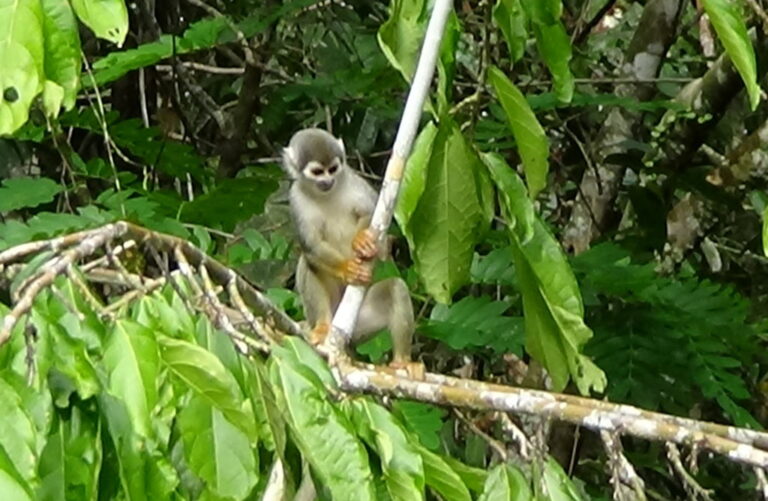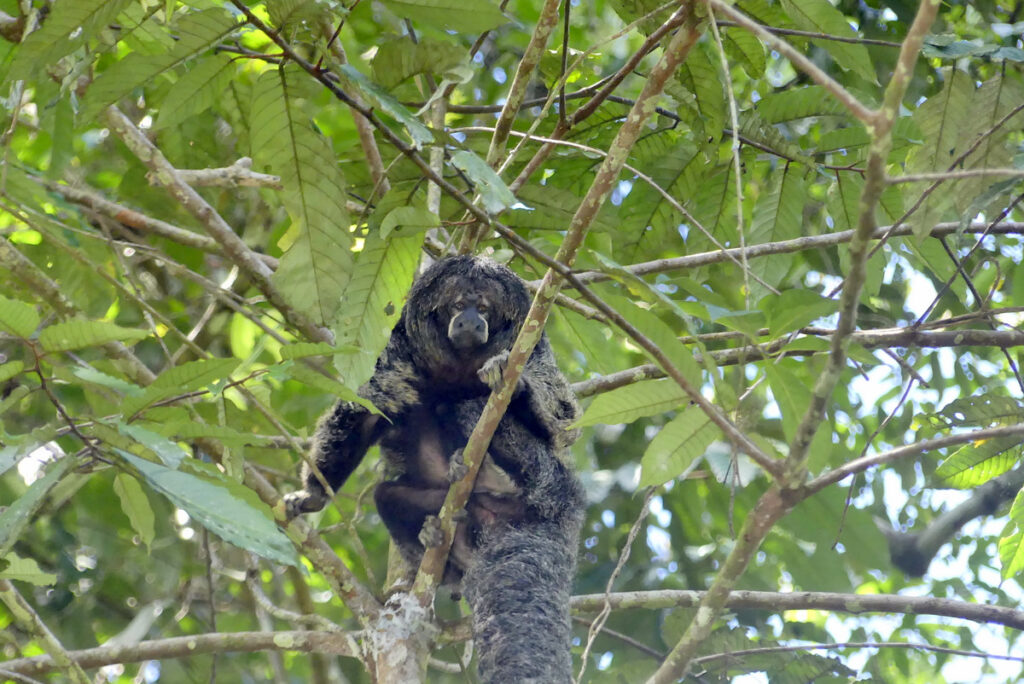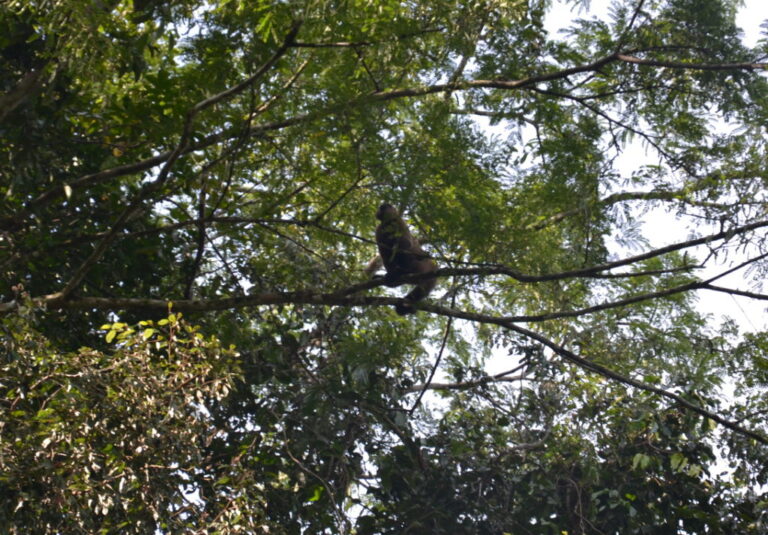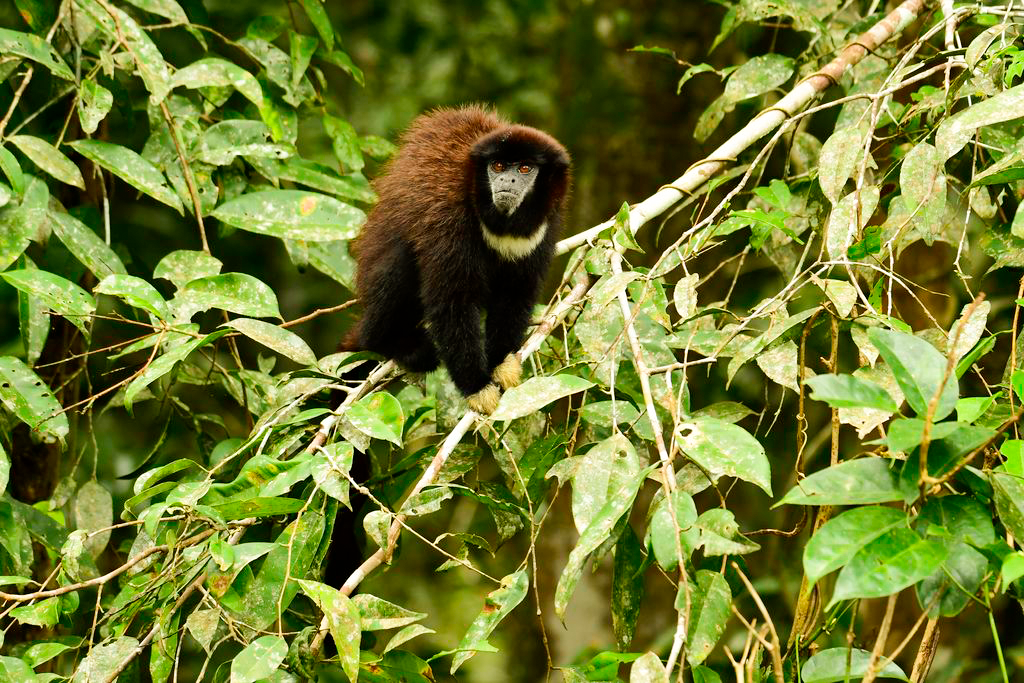
MONKEY SHOW IN THE CUYABENO RESERVE:
AN ADVENTURE IN THE TREETOPS
Imagine sitting in a canoe with a gentle breeze blowing through your hair and the first rays of sunlight transforming the Cuyabeno River into a glistening ribbon of light. As you leisurely paddle towards the lodge, your eyes wander over the majestic canopy of the rainforest. A popular saying goes: “The journey is the reward”. Nowhere is this more true than here in the rainforest, where spotting wildlife – whether from a canoe on the water or on foot in the dense greenery – is the greatest reward.
Spotting some animals, such as river dolphins or anacondas, often requires a bit of luck. But when it comes to the lively monkeys that hop between the branches, the chances are good. What fascinating monkey species live in the Cuyabeno Reserve?
One of my personal favourites is the squirrel monkey. With their distinctive faces, characterised by black mouths and white fur around the eyes, they have rightly earned their name “squirrel monkeys”. These little acrobats use their long, hairy tails not for climbing but for balancing. In the afternoons they can often be seen hopping happily from tree to tree, especially near the lodge.
Another common inhabitant of the Cuyabeno National Park is the emperor’s moustached tamarin. These small monkeys, which measure between 13 and 30 centimetres (excluding the tail), are known in the local language as “bebeleche”, which means “to drink milk”. Their name comes from their white mouth, which looks as if they have just drunk milk and forgotten to clean themselves afterwards.
Among the larger species, the woolly monkey stands out. These imposing, hairy animals live in large groups and use their powerful tail as an extra limb to help them climb. It is a fascinating spectacle to watch them perform acrobatic leaps.
A real rarity to discover is the pocket monkey. Measuring only 14 to 18 cm, it is the smallest monkey of its kind. The Cuyabeno Reserve is the ideal habitat for these small creatures, which make their home in the flooded forests. Unfortunately, due to their popularity as pets, they are highly endangered by illegal hunters. But even if they are difficult to spot, nothing is impossible!
These are just a few of the many fascinating monkey species that live in the reserve. Are you curious? Come and experience the exciting world of monkeys for yourself! Spend a few days in the Cuyabeno Reserve and let yourself be enchanted by the impressive variety of flora and fauna! An unforgettable adventure is waiting for you!





